
Happy Father’s Day! Check out my new blog post for AncestorCloud – Scaffolding Your Research. I’ve got to get the link corrected in the article. It should be ICLD.

Happy Father’s Day! Check out my new blog post for AncestorCloud – Scaffolding Your Research. I’ve got to get the link corrected in the article. It should be ICLD.
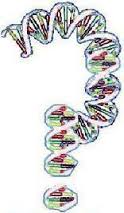
Unless you plan on waiting until Black Friday, which I’m going to do, there are two special offers available for DNA kits in honor of Father’s Day:
1. Ancestry DNA is $79.00, however, if you order it via Amazon.com and are a prime member, you don’t have to pay shipping. Sale ends June 18th.
2. MyHeritage DNA is $69.00 – ends June 19th.
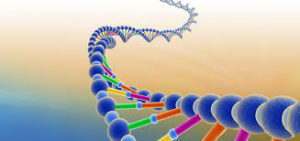
I took a wonderful webinar through the Association of Professional Genealogists on Thursday evening on DNA and Ancestry given by Jennifer Anderson Zinck. Although my husband and I tested through Ancestry before their new tests became available in October 2014, our earlier results are still available through the DNA tab on the ribbon. I had thought Ancestry was no longer supporting their older tests so I was pleasantly surprised.
Understandably, the old results aren’t going to be a part of their new communities and circles. I decided to upload that old data into MyHeritage.com’s new DNA feature as they recently began accepting data from other companies.
To upload, click on the MyHeritage DNA tab’s dropdown “Upload DNA data NEW.” Click the pink box “Start.” Click if you are uploading your data or someone else’s. In my case, I was trying to upload my mtDNA. Then, click the Service Terms and Consent Agreement. Next, click the pink box “Upload.” Ancestry downloads the results as a csv file which my computer didn’t like. I converted it to an Excel file as that is what it is and uploaded it.
The pop up told me “DNA uploaded successfully.” Good thing I decided to click “Manage Kits” before I uploaded hubby’s data. Surprise, surprise – my kit was marked “Invalid.” I thought that might be because I had changed formats so I went back through the steps and uploaded the csv file. Again, I got the “DNA uploaded successfully” but in checking further, it was marked as “Invalid.”
I called MyHeritage at 1-877-432-3135. Don’t get confused by the voice mail options! I wasn’t needing billing or accounting (1) or sales (2) and the third option, tech support, says to call back between 7 am -5 pm. Since it was 9:15 AM I thought the phones might be down. The message repeats twice but just hold on because you’ll eventually be placed in the queue for assistance. I was number 9 and the wait time was about 15 minutes.
I told the tech guy the process I had followed and it turns out that MyHeritage does not accept mtDNA or yDNA, only autosomal, which we hadn’t taken. I suggested that the type of test be written on the site to save phone calls and wasted time though autosomal is the way to go now and there probably aren’t a lot of folks like us who have older tests.
So, if you have an autosomal DNA test done at a competitor’s site, you might want to take advantage of MyHeritage’s free offer. Getting your data out to another site just might unlock secrets you never knew existed.

Each Memorial Day when I was growing up, I’d accompany my family to tend the graves of ancestors I never knew. Small flags stood at attention on the graves of veterans and the scent from flowers filled the air.
My grandmother had a “cemetery box” in the trunk of her car; it contained hand clippers, a trowel, garden gloves, a rag and a paper bag. Grandma would don the gloves and clip any tall grass growing around the stone, putting the clippings in the paper bag. If weeds were sprouting my mom carefully pulled them out or used the trowel to remove before tossing them into the paper bag. Finally, the stone would be wiped down. I don’t remember seeing either spraying the stones with a cleaning product but I had usually lost interest by that time and was wandering around looking at the pictures on nearby markers.
In the older part of the cemetery where my great grandfather lay, many stones contained photos of the deceased. Frozen in time, I was fascinated by the faces staring out at me. Many were in uniform having died during World War I. Others were like my great grandfather who had died in the 1919 flu epidemic. Who knew from which others had succumbed? My imagination would kick in and I’d make up stories about their demise. I was usually in the middle of some epic made up tale when I was called to return. Back into the car we drove to yet another area of the cemetery to pay respects to family friends and former neighbors.
In all those visits it never once occurred to me to take a picture of the stones. Assuming they would always be there, why would a photo be needed? By the time I had entered by teens vandals had toppled many stones in the older part of the cemetery and those that couldn’t be moved were damaged by having the picture obliterated by blows. My great grandfather’s picture was one that was destroyed. We had a copy of the photo but the stone was never repaired.
Thank goodness for Find-A-Grave, Billion Graves and individuals who have posted gravestone photos on other sites. If you’re planning an upcoming cemetery visit, make sure you snap a picture during your visit and upload to preserve the record. Although we don’t think of a tombstone as a record, they are and need to be cited just like paper documents.
Here are a few hints for photographing stones:
![]() It’s okay to tidy up the stone a bit but avoid major scrubbing. I’ve added a spray bottle and bleach tablets to my cemetery kit. Placing one tablet in the bottle and adding water, I can spray the stone to remove algae and dirt quickly. I sometimes need to use a soft bristle brush, too, but be gentle!
It’s okay to tidy up the stone a bit but avoid major scrubbing. I’ve added a spray bottle and bleach tablets to my cemetery kit. Placing one tablet in the bottle and adding water, I can spray the stone to remove algae and dirt quickly. I sometimes need to use a soft bristle brush, too, but be gentle!
![]() vIf someone has placed flowers or other adornments in front of the stone it’s alright to move them for the photo but please carefully replace when you’re done.
vIf someone has placed flowers or other adornments in front of the stone it’s alright to move them for the photo but please carefully replace when you’re done.
![]() For upright standing stones – get down in front and level with the stone. It reduces distortion and if the photo is taken close up, minimizes your shadow.
For upright standing stones – get down in front and level with the stone. It reduces distortion and if the photo is taken close up, minimizes your shadow.
![]() For flat stones – try to take the picture from directly above making sure you don’t include your feet. If you can’t do that, please crop the photo before uploading.
For flat stones – try to take the picture from directly above making sure you don’t include your feet. If you can’t do that, please crop the photo before uploading.
![]() Back up and take a photo of stones adjacent to the one that is of interest to you. Possible relatives, neighbors or friends may have been buried close by and might be of help when you are researching paper documents when you return home. This method may alert you to a child who died between census years or an uncle who came for a visit and passed away unexpectedly.
Back up and take a photo of stones adjacent to the one that is of interest to you. Possible relatives, neighbors or friends may have been buried close by and might be of help when you are researching paper documents when you return home. This method may alert you to a child who died between census years or an uncle who came for a visit and passed away unexpectedly.
Remember, just because it’s engraved in granite doesn’t make it so! Conflicting evidence does occur; an error could have been made just like with paper. If the cemetery office is open, stop in and ask for a copy of the records. To save the staff time I often photograph them in lieu of having a photocopy made. Being thoughtful goes a long way!
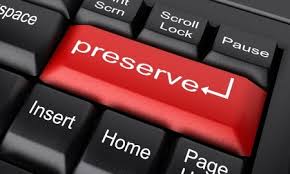
At the recent National Genealogical Society conference, there was a lot of chatter about preserving your genealogical records after you’re gone. I have to disagree with those that say if you don’t cite your work it will be tossed. I don’t know about you, but my family could care less where I find what I find. Unless the finder has been bitten by the genealogy bug, no one will understand the importance of citing and analyzing sources.
That said, I’m definitely in favor of following the standards. I think you should do the right thing but that is not going to save your years of effort from other destruction by surviving family members. I firmly believe there is only 3 ways to make sure that your research is preserved but you must plan ahead:
![]() Donate your work locally and/or electronically so that future folks you don’t even know can benefit. These are the people who will not value your work if you didn’t follow the standards soundly.
Donate your work locally and/or electronically so that future folks you don’t even know can benefit. These are the people who will not value your work if you didn’t follow the standards soundly.
![]() Publish now and get your work in as many hands as possible. It’s quite simple to publish an eBook or you can print from whatever word processing program you use and have copies made at one of the big box office supply stores. Just type “how to publish an eBook” in amazon.com’s search engine and many free books are available to get you started. The holidays are around the corner and who knows?! A recipient might just get interested.
Publish now and get your work in as many hands as possible. It’s quite simple to publish an eBook or you can print from whatever word processing program you use and have copies made at one of the big box office supply stores. Just type “how to publish an eBook” in amazon.com’s search engine and many free books are available to get you started. The holidays are around the corner and who knows?! A recipient might just get interested.
![]() Getting a family member hooked is not as difficult as it sounds. The idea here is to match the living person’s passion to an ancestor. My kids could care less about their Great Grandma Elsie’s china. I understand that; we’ve used it for years as they’ve grown so it’s not so special. Will it be preserved? Most definitely, but it’s just not that exciting to them. On the other hand, they’re into medicine and research so learning about the life of that great uncle doctor in the 1800’s and a 5th great grandfather who was a chemist really gets them listening. The old tool box is a draw for our son while the old thread is a tie for my daughter to her 2 x’s great grandmother. An attachment develops when you can relate so find the connection and you’re work is safe!
Getting a family member hooked is not as difficult as it sounds. The idea here is to match the living person’s passion to an ancestor. My kids could care less about their Great Grandma Elsie’s china. I understand that; we’ve used it for years as they’ve grown so it’s not so special. Will it be preserved? Most definitely, but it’s just not that exciting to them. On the other hand, they’re into medicine and research so learning about the life of that great uncle doctor in the 1800’s and a 5th great grandfather who was a chemist really gets them listening. The old tool box is a draw for our son while the old thread is a tie for my daughter to her 2 x’s great grandmother. An attachment develops when you can relate so find the connection and you’re work is safe!

One of my local libraries was spring cleaning and decided to give away back issues of old magazines. I picked up a few of Ancestry from the late 1990’s and last weekend, decided to sit outside to enjoy our beautiful weather and page through the September/October 1999, Vol. 17, No. 5 issue. Holy Smokes did it jar me!
The main feature was a story entitled “Victorian Rites of Passage” which focused on changing burial practices. Interesting but nothing new. In fact, I remember reading the article back in the day. I was about to just move on to the next magazine when I decided to thumb through the rest of the issue. Glad I did as I paused at “FamilySearch Online: The New LDS Web Site.” I had to stop and think for a moment. Has it really been 18 years since FamilySearch has been active online?! That was my go to place then and continues to be so today.
Genealogy has moved by leaps and bounds since home computers became a norm and we have continued to adapt to the changes. Prior to 1983 when my husband purchased our first home computer, a TI/99 with a genealogy program on a cartridge, all my work was handwritten group sheets and pedigree charts. I diligently typed the information into the computer program while I was pregnant with my first child. We had no printer so I don’t have a printout of those records but it did help me neatly organize names and dates.
By the time our second child was born a few years later, we had moved on to a Compaq system with a printer. Genealogy software in the late 1980’s and 90’s was primarily CD-ROMs which were pricy and always on my birthday/Christmas list.
As educators, my husband and I had FIRN accounts, a text only email and list serv, that we had used beginning in 1994. That was strictly for the education world and no genealogy information was available. Thanks to the free software at Kmart while back to school shopping, my family went America Online (AOL) in August 1995. I remember the date because our oldest had started middle school and wanted to know if we could also get a fax machine so she could fax group assignments to peers. We bought a HP printer-fax-scanner that lasted for years. That was the machine I used to scan all my family photos and documents.
There was little genealogy information available online during those days and I used the internet mostly for the AOL interest groups or emailing distant relatives mining for information. Most of that was done late at night as we had dial-up and if we were online, the home phone was out of service. We got our first mobile phone about that time but it was hardwired into our car and looked like a home phone of the day – cord and all!
I’m not sure when I first downloaded the LDS’ free Personal Ancestral File (PAF) but I remember grumbling about having to re-enter all the data that was stored in the old cartridge program. The Ancestry article mentions the release of PAF 4.0. I used PAF, World Family Tree and Ancestry Family Tree at the time. These were pre-Gedcom days. These were pre-smart phone days. These were limited search engine days. These were pre-gotomeeting days. These were pre-facebook-twitter-linkedin, etc. days.
Wow, isn’t it amazing how far the genealogy world has progressed in less than 20 years? Think about how far we’ve yet to grow. How exciting!
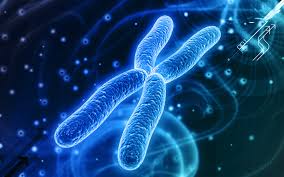
On April 25, 1953, James Watson and Francis Crick’s article, “The Molecular Structure of Nucleic Acids: A Structure for Deoxyribose Nucleic Acid,” was published in Nature.1 Thus began the DNA revolution.
In honor of that anniversary, Thomas MacEntee has deemed April 25th as DNA Day and other organizations have come forward to offer sales and specials that may be of interest to you (Think of this as a genealogist’s own President’s Day sale!)
Ancestry.com’s price is $79.00. The offer ends April 26th. AncestryCanada price is 30% off ; AncestryUK is 25% off
MyHeritage is also offering kits for $79.00 but will bundle a kit with a subscription for even greater savings.
23 and Me is offering free shipping on their $99.00 autosomal kit with 10% off an additional kit
FamilyTreeDNA is offering Family Finder kits for $59.00
The last time these prices were this low was during the 2016 Holiday shopping season.
1 Watson, James D., and Francis Crick. “Molecular Structure of Nucleic Acids: A Structure for Deoxyribose Nucleic Acid.” Nature 171, 4356 (25 April 1953): 737-738.

I definitely went old school genealogy this week and like back in the day, it worked! I’m still heavily researching my Duer lines and after meeting someone from Trumbull County, Ohio at a local genealogy meeting a few months ago, decided I should join from afar, the Trumbull County Chapter of the Ohio Genealogy Society.
On Tuesday I received the first newsletter in the mail and I was listed on the first page, along with other new members. In the back of the newsletter was a list of surnames that members were researching. No one was looking for Byrds and Duers but there were several who were researching Morrisons.
Now Morrison is way too common of a last name so I wasn’t counting on finding much for John and Eleanor (Jackson) Morrison but leaving no stone unturned, promptly emailed two of the three individuals listed. I’m going to have to go really primitive with the third person – no email address was provided but there was an address and a snail mail letter has to be sent.
I received email responses within hours and both were researching the same line! Serendipitously, one individual lives very close to me and mentioned th
at she recognized my name as she has followed my online trees for some time. It definitely is a small world! The other individual was a descendant of my Jane Morrison’s sister, Nancy, and she provided me information I previously did not have. I was not aware that Nancy had remarried after her first husband’s death which explains why I did not have a death date for her.
I don’t often blindly send emails anymore so I’m really glad I used this approach. Give it a try!

If you’ve been following my Genealogy At Heart blog, you know that hubby and I have been in the “middle” of major home remodeling which we began the day after Thanksgiving. When I say middle I really mean it – we’re half way done. Through this chaotic journey I’ve been able to apply quite a few lessons learned from the experience to genealogy which I wrote about a few weeks ago.
On Palm Sunday, our adult kids planned to come over and we were going to take a much needed respite from the renovations to attend a local art show. To plan that in, we worked hard the previous day as we hoped that the hardwood floors would FINALLY be installed in the upcoming week. For that to happen, we needed to finish prepping; we had some minor holes to fill in the concrete and to tile the entry stoop.
I’m a list person – I love to organize via writing and then cross out items when the task is complete. I’ve used technology but for this major project, reverted back to a paper and pencil method. It’s quite motivating to cross out the completed items! I do this with my genealogy, too. Using Excel, I have a spreadsheet that lists the Who (surname), What (I’m going to accomplish – research, transcribe, analyse, etc.) When (the date I place it on my list), Why (the goal, either short or long term) and How (I brainstorm where I’m going to find the info or what I need to complete the task). Some items have been on my list for a long time and others I can quickly accomplish.
Like genealogy, home maintenance doesn’t end. I don’t put “clean up my work space” on my genealogy to do list just like I wouldn’t place “mow the lawn” on my home renovation list.
Some items on my genealogy list may be much more difficult to accomplish than others. I’ve been trying to locate the parents of my second great grandmother, Mary “Polly” Dennis for years and don’t expect resolution tomorrow but who knows?! Records show up in the most unexpected places. Likewise, the hunt for a new door threshold (seriously – cannot find one anywhere that fits our front door!) has got to have a resolution quickly or my power bill will be astronomical. Although there are other important tasks to work on, finding that threshold has to take precedence. Which leads me to flexibility…
I’m not holding my breath that my floors will be installed this week. When I called to verify that the floors were in, I was told the order was partially filled. It’s been nearly a month since we ordered and the company cannot explain why the entire order isn’t ready. I wasn’t thrilled or surprised. Like in genealogy, expect the unexpected. If the company cannot provide the missing items we’re going to have to look elsewhere. Sure, it will take longer to finish but in the end, I sure will rejoice just like I do when I’ve found an elusive ancestor.
Because I’m paying as I go with the house renovation, my initial list only took us to the hardwood floor install. I knew I had the funds to get to that point AND the house would be livable again. So late Saturday after dinner, hubby and I went back to the list and I let him do the honors of crossing out all of his specifically assigned tasks that he accomplished that day. All that was left for him was to grout the newly installed entry tiles. It was time to make a new list for phase 2. Although I’m looking forward to the day my home renovations are through, my genealogy to do list will never end and that’s just fine with me!
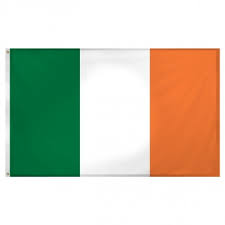
Do you have Irish roots? If so, you need to know about a wonderful document that was released last month. The List of Church of Ireland Parish Register that was once an in-house document compiled by the Public Records Office of Ireland is now updated and available to the general public for free.
I especially love the “Comment” section, key and the color coding which makes finding what you need and where it’s located easier. This 96 page pdf may be just what you need to discover your Irish lines’ baptism, marriage and burial records. ádh mór!